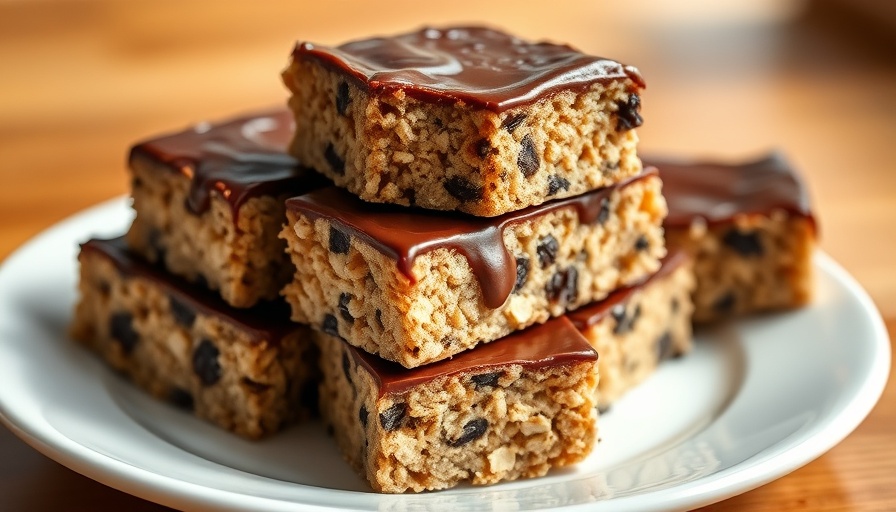
Reviving Tradition Through Sustainable Practices
Nestled in the beautiful embrace of British Columbia's central coast, the Kitasoo Xai’xais Nation is not just preserving its storied traditions; it is redefining them through innovation in aquaculture. Situated in the remote village of Klemtu, this tight-knit community of about 380 people is setting a high standard in sustainable fishing practices, showcasing how modern technology can work in harmony with age-old customs.
For decades, fish farming has been integral to the Kitasoo Xai’xais culture. Roxanne Robinson, a prominent voice in the community and former Chief Councillor for Spirit Bear Lodge, reflects on the evolution of their fish farming practices which began in the 1980s. “From small, local farms, we’re now collaborating with larger entities like Mowi Canada West to bring our products to shelves across the nation,” Robinson explains. This partnership has sparked the creation of the Klemtu Spirit brand—a premium smoked salmon that is gaining notoriety far beyond their local waters.
The Technology Behind Sustainable Salmon Farming
One of the cornerstones of Kitasoo Xai’xais’s success lies in their staunch commitment to environmental stewardship. Their approach emphasizes the use of **cutting-edge technology** that not only enhances the quality of fish farming but also ensures minimal ecological impact. Underwater cameras and artificial intelligence play pivotal roles; they monitor how much salmon feed is distributed and help optimize feeding times, ensuring that minimal waste is generated.
By skillfully managing food intake and site rotations, the community ensures the marine ecosystem remains healthy. One feed station operator mentioned, “Knowing when to stop feeding is crucial. The cameras tell us when fish slow down, preventing overfeeding.” As a result, their fish farms can rest and recover between harvests, safeguarding fish populations and water quality.
A Community United in Employment
The fruits of this sustainable venture extend far beyond ecological benefits—they enhance the overall well-being of the community. Today, an astounding **99%** of the local population is employed, with **51%** of the economy directly linked to the aquaculture industry. This robust job market provides basic needs and fosters a sense of stability, with many locals actively engaged in the Klemtu Spirit processing plant, where workers range from energetic youth to wise elders contributing their invaluable experience.
Employees feel a deep sense of pride and connection to their work, as noted by Pam Chers, a processing plant worker. “Anyone in the village is welcome to work here,” she shares, highlighting how this inclusive culture supports jobs for all, from single parents to seniors. This community spirit is beautifully captured by Clifford, the octogenarian worker, who advises the youth, “Don’t stop—keep going. Trust the elders, as they carry wisdom passed down from our ancestors.”
A Taste That Tells a Story
Klemtu Spirit salmon isn't just a product; it’s a **narrative of culture, resilience, and respect** for sustainable practices. With every fillet and smoked portion, consumers get a taste of the Kitasoo Xai’xais Nation’s history and commitment to their land and sea. As this brand continues to expand—now reaching grocery stores across Canada and soon into the U.S.—it serves as a beacon for supporting sustainable Indigenous food systems.
By choosing Klemtu Spirit, consumers are embracing a story of sustainable living that not only benefits the environment but also uplifts rural communities and promotes local economies. “It’s more than just salmon,” Robinson emphasizes. “It’s about creating a positive impact and building pride in our food systems.”
Bringing Awareness to Sustainable Choices
In the current climate, where overfishing and environmentally unsound practices threaten marine biodiversity, the example set by the Kitasoo Xai’xais Nation is particularly inspiring. Their journey highlights the importance of **diverse perspectives** in addressing food sustainability—showing that innovation can and should spring from ancient knowledge tied to our natural resources.
As consumers become increasingly conscious of where their food comes from, initiatives like Klemtu Spirit offer a compelling option for those looking to make informed choices. Embracing sustainable food practices not only has the potential to improve local economies, but it also fosters a healthier planet for future generations.
The Future of Indigenous Aquaculture
Looking ahead, the Kitasoo Xai’xais Nation is not just focused on maximizing profits but is committed to ensuring that their practices nurture the environment and the community. As they pave the way for future generations in sustainable aquaculture, they invite others to join them in promoting food literacy and confidence in choosing local, sustainable options.
As Klemtu Spirit grows in popularity, it stands as a **testament to the power of community and sustainability**, blending tradition with modern practices to build a better future. Supporting such initiatives is crucial as we strive for a more sustainable food system.
In a world increasingly strained by climate change and environmental degradation, the Kitasoo Xai’xais Nation inspires hope and demonstrates that positive change is indeed possible through dedicated effort and commitment.
Join the movement toward sustainable living. Explore more about Indigenous food systems, support local initiatives, and foster connections with communities committed to a better tomorrow.
 Add Row
Add Row  Add
Add 




Write A Comment